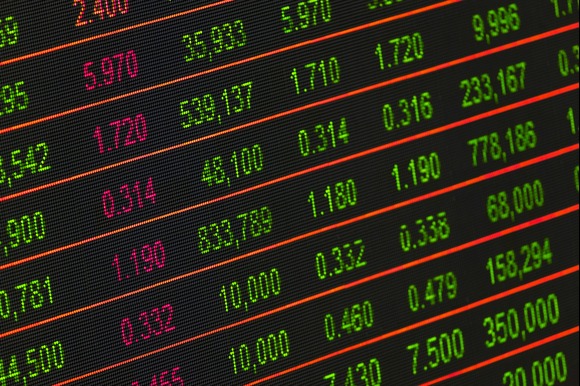
Photo by Pixabay
US markets are set to open significantly higher, indicating a sense of relief following President Donald Trump’s statement that he would not seek to dismiss the Federal Reserve Chair. Futures for the Dow Jones Industrial Average surged by 1.9% prior to the market opening on Wednesday, while S&P 500 futures increased by 2.6%. Nasdaq futures experienced a rise of 3%. Trump, frustrated with the Federal Reserve’s reluctance to immediately lower interest rates, had suggested he could dismiss Fed Chair Jerome Powell.
However, he clarified to reporters on Tuesday that he has no plans to do so. Trump advocates for Powell and the Federal Reserve to resume reductions in the benchmark borrowing rate to stimulate economic growth. Powell and other Federal Reserve officials have indicated their intention to proceed cautiously with interest rate adjustments due to the economic uncertainty stemming from Trump’s tariffs and persistent inflation exceeding the Fed’s 2% target.
Most legal experts concur that Trump lacks the authority to remove Powell from the Federal Reserve’s board of governors, and there is no established legal precedent for such an action. Nonetheless, opinions are divided on whether a president can dismiss him from the chairmanship. The markets are also responding to remarks made on Tuesday by U.S. Treasury Secretary Scott Bessent, who stated that the ongoing tariff conflict with China is not sustainable and anticipates a de-escalation in the trade war.
Naturally, the markets will remain attentive to the latest statements from the White House regarding tariffs and any indications of forthcoming trade agreements. Consequently, market trends are likely to be influenced by Trump’s latest decisions concerning tariffs and trade, according to Tim Waterer, chief market analyst at KCM Trade.
Many Wall Street strategists are currently hesitant to make definitive predictions, suggesting instead that financial markets will likely continue to fluctuate, driven by hopes that President Trump may engage in negotiations with other nations to reduce his tariffs. Should such agreements not materialize swiftly, a significant number of investors anticipate a potential recession.
Among the stocks experiencing a notable recovery is Tesla, following Elon Musk’s announcement that he will devote less time to Washington and focus more on managing his electric vehicle company. This commitment comes in the wake of the company’s quarterly financial report released late Tuesday, which revealed a substantial decline in profits.
Tesla has faced challenges including vandalism of its vehicles, protests, and calls for a consumer boycott, all stemming from Musk’s management of cost-cutting measures related to the US government. Musk’s assurance to distance himself from the Trump administration has overshadowed Tesla’s dwindling profits, which plummeted from $1.39 billion to $409 million in the first quarter. Consequently, Tesla shares increased by 7% prior to the market opening on Wednesday. Additionally, major technology stocks experienced gains early Wednesday, with Nvidia at the forefront.
The chipmaker’s shares have exhibited significant volatility amid recent market fluctuations, rising by 5.5% before the opening bell. Apple saw a 3% increase, while Meta rose by 4.5%, following fines imposed by the European Union of 500 million euros and 200 million euros, respectively, for violations of digital competition regulations.
In midday trading in Europe, France’s CAC 40 surged by 2.4%, Germany’s DAX increased by 2.6%, and Britain’s FTSE 100 rose by 1.4%. In Asia, Japan’s Nikkei 225 index climbed by 1.9% to close at 34,868.63, Australia’s S&P/ASX 200 jumped by 1.3% to 7,920.50, South Korea’s Kospi gained 1.6% to reach 2,525.56, Hong Kong’s Hang Seng index added 2.4% to 222,072.62, while the Shanghai Composite experienced a slight decline of 0.1% to 3,296.36.
In the realm of energy trading, benchmark US crude experienced an increase of 55 cents, reaching $64.22 per barrel; however, it remains poised for its most significant monthly decline since October 2023. This situation has benefited consumers, as the average price for a gallon of gasoline in the US on Wednesday was $3.17, reflecting a decrease of nearly 14% compared to the same period last year. Meanwhile, Brent crude, the international benchmark, rose by 54 cents to $67.98 per barrel. Additionally, the US dollar fell to 141.99 Japanese yen from 142.37 yen, while the euro appreciated to $1.1392, up from $1.1379.




